Animals
Mouth-Peeing Turtle
There's something unusual about the Chinese soft-shelled turtle. Apparently it's "the only animal to urinate through its oral cavity." Put another way, it pees through its mouth. We know this thanks to Alex Yuen Kwong Ip of the National University of Singapore, who decided to attach tubes to the cloaca of these turtles. He discovered that only a small amount of urea was coming out that way. But when the turtles stuck their head in a bucket of water to take a drink, the urea concentration in the water increased dramatically. [New Scientist]
Posted By: Alex - Sat Nov 03, 2012 -
Comments (5)
Category: Animals, Body Fluids
Deer Compost

Posted By: Alex - Wed Oct 24, 2012 -
Comments (9)
Category: Animals, Death
Fur Trapping the Boy Scout Way
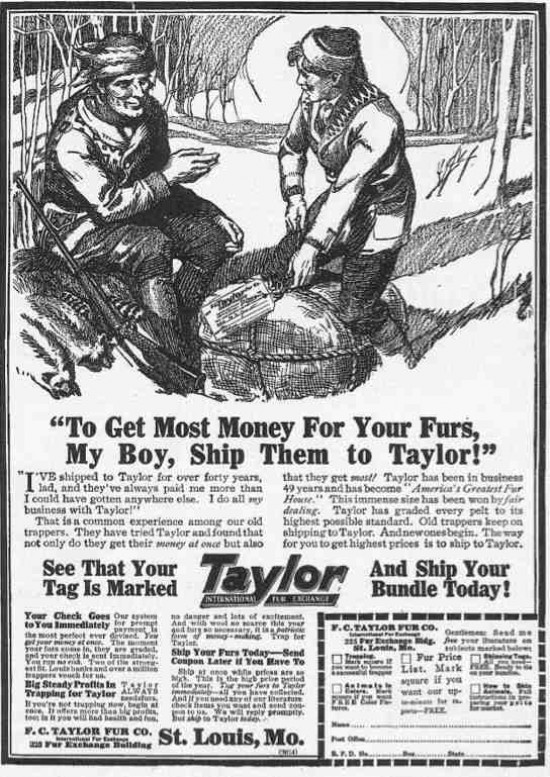
Not quite a century ago, apparently enough Boy Scouts indulged in fur trapping that a big fur company felt compelled to advertise to them.
What would PETA say if the Scouts did that today?
Wait a minute... They still kinda do!
From Boys' Life for February 1919.
Posted By: Paul - Tue Oct 23, 2012 -
Comments (4)
Category: Animals, Clubs, Fraternities and Other Self-selecting Organizations, Hunting, Trapping and Other Wilderness Activities, Twentieth Century
Seasick Sheep
University of Queensland PhD student Eduardo Santurtun is conducting research into whether sheep get seasick. Or rather, the effect of "ship motions" on sheep. But he's not studying the sheep on an actual ship. Instead, he's created a contraption (a modified flight simulator) that replicates the roll, pitch, and heave of a ship. His subjects spend hours a day inside this thing being gently see-sawed up and down, back and forth. This is all being done to help the sheep, not hurt them. His research is supported by the Centre for Animal Welfare and Ethics, which is concerned about sheep getting seasick and dying as they're transported from farms in Australia to consumers around the world. [qt.com.au, abc.net.au]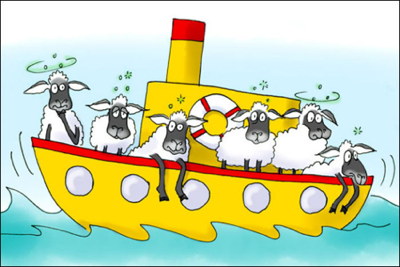
Posted By: Alex - Mon Oct 22, 2012 -
Comments (8)
Category: Animals, Science, Experiments
Raving Rabbids
RAVING RABBIDS TRAVEL IN TIME from AKAMA STUDIO on Vimeo.
TRAVEL IN TIME / INCAS from AKAMA STUDIO on Vimeo.
TRAVEL IN TIME / Christophe Colomb from AKAMA STUDIO on Vimeo.
TRAVEL IN TIME / Jules César from AKAMA STUDIO on Vimeo.
TRAVEL IN TIME / Billy the Kid from AKAMA STUDIO on Vimeo.
Despite being advertising for a video game, these mini-cartoons are still pretty weird and funny.
Posted By: Paul - Mon Oct 22, 2012 -
Comments (8)
Category: Animals, Advertising, Cartoons, Time-travel, Videogames and Gamers
Ancient Flamingos and Grebes similar
Just when you start to believe in species purity, a find like this in Spain sets the evolutionary world on its head.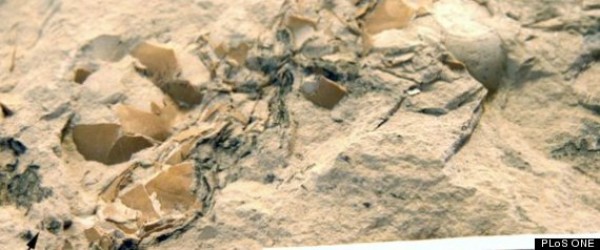
The short version is this: modern flamingos nest in a very different way than this recently discovered fossilized flamingo nest.
It seems flamingos and grebes may have nested more similarly in the past than now, and as the article states, they are closely related -- maybe a little too close?
Here's the link.
http://www.huffingtonpost.com/2012/10/20/prehistoric-flamingo-nest-eggs-spain_n_1986140.html
Next we'll find out homo sapiens and neanderthal have been diluting the gene pool.
Oh, wait. We have found that out.
Here's an ancient human interbreeding article.
http://www.washingtonpost.com/wp-dyn/content/article/2010/05/06/AR2010050604423.html
But then again, it is an article from the Washington Post. Who can you trust these days?
Posted By: gdanea - Sun Oct 21, 2012 -
Comments (7)
Category: Animals
Raising Your Own Elephant
Jenny Webb is raising an orphaned elephant. She says it's like raising kids (a 220 pound kid), who is bottle-fed 6 gallons of coconut formula a day.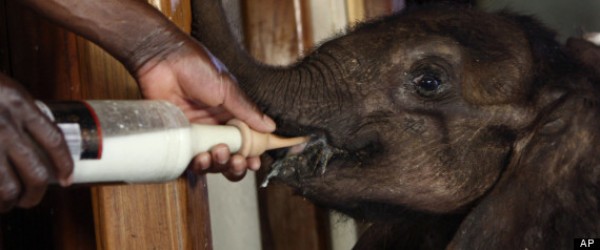
The elephant's mother was likely the victim of poachers.
Here's Jenny and Moses.
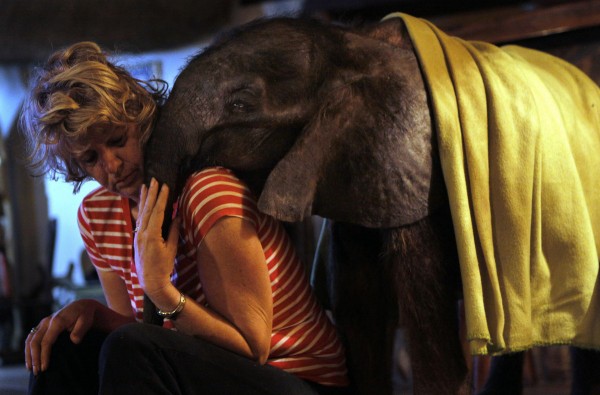
And the website of Jenny's new Jumbo Foundation -- dedicated to raising orphaned animals.
http://www.jumbofoundation.com/
Posted By: gdanea - Wed Oct 17, 2012 -
Comments (5)
Category: Animals
Gus Mager and Un-Natural History
Cartoonist Gus Mager is well-respected for his pioneering newspaper strips. But he seems to have let his fertile and fanciful brain trespass into his supposedly scientific feature for Popular Science. Some of the "facts" given in his column appear somewhat dubious, to say the least. The business about the grapefruit was all settled well before Gus was working in the 1930s.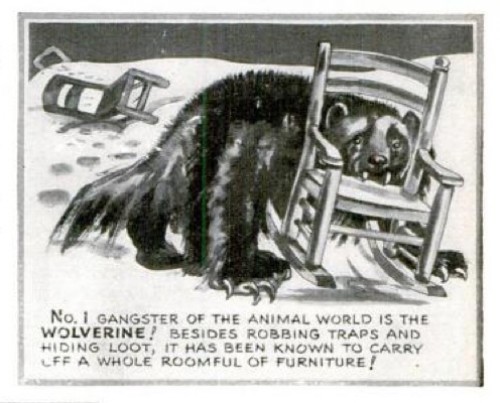
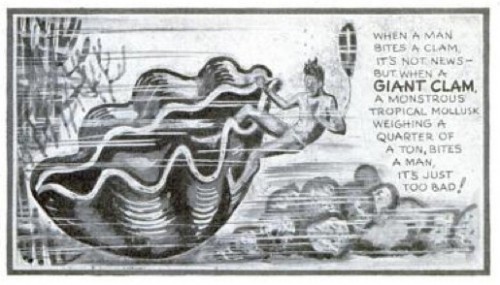
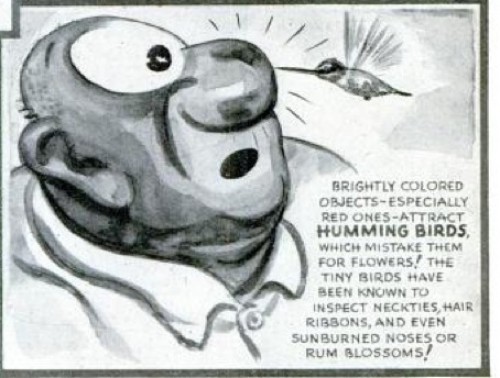
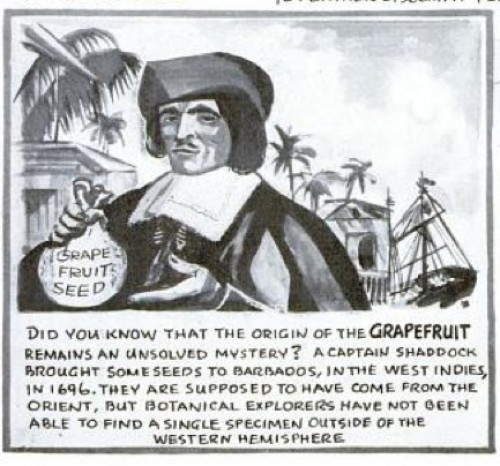
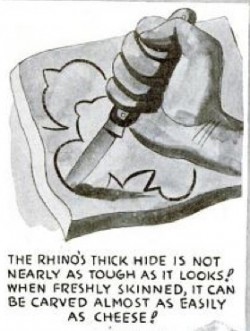
Posted By: Paul - Sat Oct 13, 2012 -
Comments (5)
Category: Animals, Comics, 1930s, Natural Wonders
Migaloo the Albino Humpback Whale
This clip from ITN news makes me think I have been saying "albino" wrong for decades. There's a nice tail flip at about :35.I'm also thinking of changing my name to "Migaloo", which apparently means "white fella" in an aboriginal language.
Not politically correct, but it is a correct description.
Both of us are big white fellas.
Posted By: gdanea - Fri Oct 12, 2012 -
Comments (5)
Category: Animals
Gorillas Watch Caterpillar
Inter-species fascination is fun to watch, but if you are the boss, you may be the one who gets to watch the caterpillar.Did anyone else get the feeling they were considering lunch?
Think about what you sitting there watching this means. One species (us) watching another species(gorillas) watch another species (caterpillar). If we could only know if the caterpillar was watching another species. And don't forget, there is someone out there watching what you are watching. (And probably someone watching them.)
Posted By: gdanea - Wed Oct 10, 2012 -
Comments (10)
Category: Animals

| Who We Are |
|---|
| Alex Boese Alex is the creator and curator of the Museum of Hoaxes. He's also the author of various weird, non-fiction, science-themed books such as Elephants on Acid and Psychedelic Apes. Paul Di Filippo Paul has been paid to put weird ideas into fictional form for over thirty years, in his career as a noted science fiction writer. He has recently begun blogging on many curious topics with three fellow writers at The Inferior 4+1. Contact Us |




